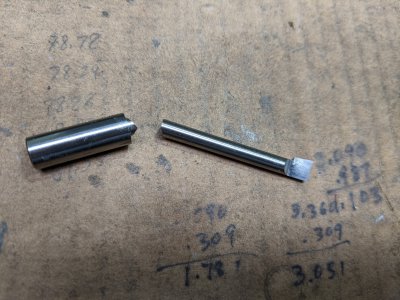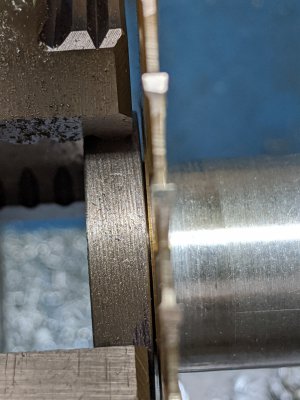You want the diameter that the cutter centers on to be concentric with shaft that fits into the collet.
As concentric as possible. Nigh on zero highly desirable.
How best to achieve that goal? Cut all critical features in one part in one setup. OR..
Turn it on centers. Perfect concentricity. Can be flipped end for end without losing concentricity.
Make the cap with a recess to fit loosely over the stub the cutter sits on.
Drill and tap the end of the arbor for the attaching screw. If you made your initial center large enough, there will still be some center left after tapping. Bonus!
The cap is just a fancy glorified washer that contacts the cutter at the outside diameter. It has no functional need to be concentric.
You want the cup to contact at the od so the holding torque is maximized for a give bolt clamp load.
Last thing you want is a flat washer that potato chips under bolt load and grips the cutter near the inside radius. That is asking for the cutter to slip.
As concentric as possible. Nigh on zero highly desirable.
How best to achieve that goal? Cut all critical features in one part in one setup. OR..
Turn it on centers. Perfect concentricity. Can be flipped end for end without losing concentricity.
Make the cap with a recess to fit loosely over the stub the cutter sits on.
Drill and tap the end of the arbor for the attaching screw. If you made your initial center large enough, there will still be some center left after tapping. Bonus!
The cap is just a fancy glorified washer that contacts the cutter at the outside diameter. It has no functional need to be concentric.
You want the cup to contact at the od so the holding torque is maximized for a give bolt clamp load.
Last thing you want is a flat washer that potato chips under bolt load and grips the cutter near the inside radius. That is asking for the cutter to slip.



